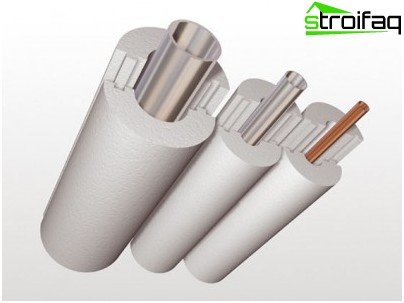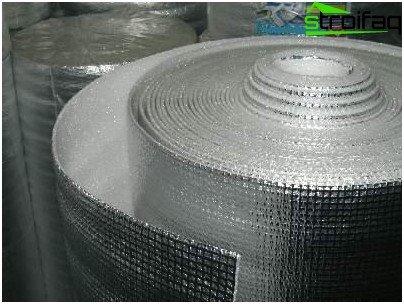Heater for pipes
With the advent of winter, emergency services are often confronted with problems that arise from the freezing of pipelines. Colds and severe frosts do not spare even the most high-quality and durable pipes – they burst. As a result, their replacement is required, and this is time and money. Those who do not want to suffer the sad fate of being left without water and other amenities in the winter should do the insulation work. Fortunately, the market has a great many different materials that can be used as insulation for pipes to provide reliable protection against frost..
Content
- Basic requirements for insulation
- Materials for pipe insulation
- Glass wool as a pipe insulation
- Practical basalt fiber
- Universal polystyrene (expanded polystyrene)
- Pros of Foamed Polyethylene
- Progressive Foil Penofol
When using this or that type of insulation for pipe insulation, it is necessary to take into account its properties, characteristics and environmental conditions in which it is planned to be used. For example, when laying sewer systems, many factors are taken into account and warming is necessarily carried out. Since sewer systems belong to underground utilities, you may not immediately notice defects, and this is fraught with serious troubles, so you should choose insulation for sewer pipes with special care or entrust this matter to professionals.
Since the effectiveness of this procedure directly depends on the type and quality of insulation materials, it is necessary to familiarize yourself with the criteria in more detail that you should pay attention to.
Basic requirements for insulation
Easy installation. It is especially important for those who plan to carry out pipe insulation work on their own, and are not at the same time a builder.
Durability. The better the insulation, the longer it will be able to perform its functions, the system will be better protected and less likely to be bothered with repeated insulation.
Tightness. If the insulation passes water, then it is unlikely that it will save the pipes in winter.
It is worth taking into account the operational and technical characteristics of various types of insulation: thermal conductivity, resistance to high temperatures, etc..
Materials for pipe insulation
Glass wool as a pipe insulation
Quite a popular material, produced by many brands in the form of mats, rolls or plates of different sizes, thickness and density. It meets all the requirements that apply to heat-insulating materials, but is not always convenient to install and requires additional insulation and sealing, which increases the cost of work and their duration. Most often used for plastic pipes.
Practical basalt fiber
Basalt fiber has all the necessary properties to call it an excellent material for insulation. Basalt cotton wool is made from it, which is characterized by a low coefficient of water absorption and excellent thermal insulation properties. Sometimes this fiber is used for the manufacture of special cylinders that are simply worn on pipes and used to warm them, no professional skills will be required for such a procedure. Some are confused by the rather high price of this material, but it pays off for the long service life of the products..

Foam “shell”
Universal polystyrene (expanded polystyrene)
This material is economical, versatile and has the desired performance properties. It enjoys well-deserved popularity and is very often used if it is necessary to perform warming of the water supply, for example, in a private house. It is used for insulation of pipes indoors and outdoors. Foam “shells”, which are interconnected, can be with or without an outer coating. Installation is easy. For the insulation of corners in the water supply system, shaped shells of various shapes are suitable.
Pros of Foamed Polyethylene
Relatively new material. Today, there are two types of it – physically crosslinked and chemically crosslinked polyethylene foam. The latter is most widely distributed due to its low price. This material is used at temperatures from – 40 to + 90 ° C.
Relative humidity practically does not matter, it can reach up to 100%. Due to the special structure, foamed polyethylene is elastic and has a high thermal resistance. This insulation is widely used for independent insulation of water pipes and heating pipes made of various materials.

Foam foil – a new generation of insulation
Progressive Foil Penofol
Refers to a new type of insulation. Structure: polished aluminum foil and polyethylene foam base. There are several types: those that have foil on one side; on both sides or combined – on the one hand foil, and on the other a self-adhesive surface. This feature makes it possible to choose the material that is most suitable in a particular case. Goes on sale in rolls.
To summarize
Today, pipe insulation can be carried out in various ways and materials, which have differences, both in composition and in application technology and structure. Manufacturers offer a wide range, and it is very important when buying to take into account the key requirements for the insulation and pay attention to its operational properties. It would be logical to give preference not to a cheaper option, but to a more efficient and high-quality one, since pipeline repair, in the event of a breakdown, will cost much more. You need to choose a heater based on three factors: the first is the location of the pipes (street, room); the second – ease of installation (the simpler the better); the third is price. We hope that these recommendations will allow you to perform pipelines warming efficiently and on time.






